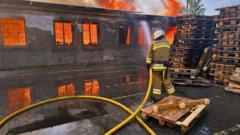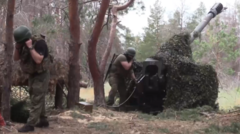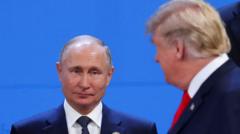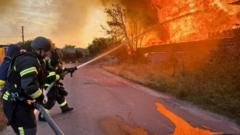**Ukraine is grappling with a surge in drone and missile strikes, leading to significant civilian casualties and raising concerns over national morale and defense capabilities.**
**Escalation of Drone Warfare Poses New Challenges for Ukraine Amidst Eroding Morale**
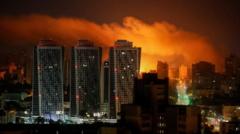
**Escalation of Drone Warfare Poses New Challenges for Ukraine Amidst Eroding Morale**
**As Russian drone attacks intensify, Ukrainians face renewed fear and uncertainty in the ongoing conflict.**
In recent weeks, the ongoing conflict in Ukraine has escalated dramatically, particularly in the capital, Kyiv, where drone warfare has become increasingly intense. Civilians, hardened by years of conflict, are now experiencing intensified air assaults that features coordinated drone and missile strikes, targeting cities across Ukraine with alarming regularity.
The sound of drones, once a novel experience marked by the ominous hum of Iranian-supplied Shahed drones, has transformed into a haunting reality for residents, prompting families to seek shelter once again. "The house shook like it was made of paper," recounted Katya, a local resident, after a harrowing night of bombardment. Many citizens, like Svitlana, have sought safety in underground parking structures and bomb shelters—a stark change from the temporary respite they thought they had gained.
The UN Human Rights Monitoring Mission in Ukraine (HRMMU) recently disclosed that June marked the deadliest month for civilians, with over 232 individuals killed and more than 1,300 injured due to these attacks. While some casualties arise from combat proximity, an increasing number are occurring in urban areas far removed from the frontline, demonstrating the widespread nature of the Kremlin's military strategy.
Recent modifications to the drones have reportedly allowed them to reach higher altitudes and improve their strike capabilities, complicating Ukraine's air defense efforts. Local experts suggest that many drones serve as decoys, designed to overwhelm the nation’s protective measures. This drone proliferation follows a pattern noted by the Institute for the Study of War, which linked increased attacks to the political climate and international developments.
As production ramps up in Russia, experts warn that Ukraine may soon face overwhelming numbers of drone attacks. Former intelligence officer Ivan Stupak emphasized the grave consequences if solutions are not found to counter this escalating threat. The new wave of drones targets not only military assets but has caused significant damage to civilian life, leading to urgent appeals from President Volodymyr Zelensky for enhanced support from international allies.
The United Kingdom recently committed to providing defense support, which includes more than 5,000 air defense missiles, reflecting the growing urgency for expanded assistance to bolster Ukraine's defense capabilities. As air defense systems are critical to preserving civilian safety, the impact of drone warfare on morale and infrastructure continues to raise pressing concerns within the country.
The sound of drones, once a novel experience marked by the ominous hum of Iranian-supplied Shahed drones, has transformed into a haunting reality for residents, prompting families to seek shelter once again. "The house shook like it was made of paper," recounted Katya, a local resident, after a harrowing night of bombardment. Many citizens, like Svitlana, have sought safety in underground parking structures and bomb shelters—a stark change from the temporary respite they thought they had gained.
The UN Human Rights Monitoring Mission in Ukraine (HRMMU) recently disclosed that June marked the deadliest month for civilians, with over 232 individuals killed and more than 1,300 injured due to these attacks. While some casualties arise from combat proximity, an increasing number are occurring in urban areas far removed from the frontline, demonstrating the widespread nature of the Kremlin's military strategy.
Recent modifications to the drones have reportedly allowed them to reach higher altitudes and improve their strike capabilities, complicating Ukraine's air defense efforts. Local experts suggest that many drones serve as decoys, designed to overwhelm the nation’s protective measures. This drone proliferation follows a pattern noted by the Institute for the Study of War, which linked increased attacks to the political climate and international developments.
As production ramps up in Russia, experts warn that Ukraine may soon face overwhelming numbers of drone attacks. Former intelligence officer Ivan Stupak emphasized the grave consequences if solutions are not found to counter this escalating threat. The new wave of drones targets not only military assets but has caused significant damage to civilian life, leading to urgent appeals from President Volodymyr Zelensky for enhanced support from international allies.
The United Kingdom recently committed to providing defense support, which includes more than 5,000 air defense missiles, reflecting the growing urgency for expanded assistance to bolster Ukraine's defense capabilities. As air defense systems are critical to preserving civilian safety, the impact of drone warfare on morale and infrastructure continues to raise pressing concerns within the country.









